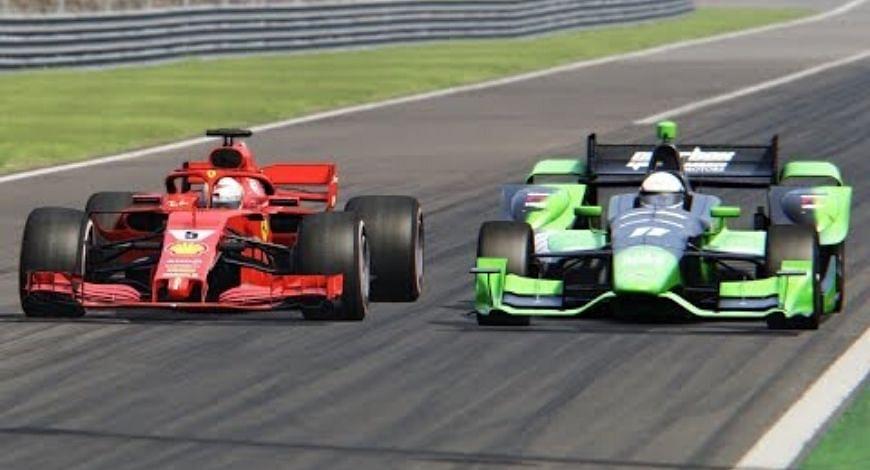IndyCar vs F1: What is the difference between the Indy Car and Formula 1 racing, with both sports set on speed but different in concepts.
Formula 1 can be claimed as the globally most-followed motorsport racing event. Whereas, IndyCar is having its own niche audience loyal to it.
If a layman gives a look at both the cars from the respective sport, then that person might feel that these cars are from the same sport but from different timelines.
That was my initial thought too, but knowing both the sports, they have vast differences and has different built to cars, tracks, laps and even rules.
Moreover, not to forget that both sports have demographical differences in their audiences too. Therefore, the Sportsrush will list out the differences in both the sport.
F1 vs Indycar Horsepower
According to the Indycar website, the horsepower of an Indycar machinery has between 550 and 700bhp to play with, depending on turbo boost.
Meanwhile, the authorities at Formula 1 are a bit secretive about their information, but in 2019 Renault announced that it had hit 1000bhp, combined from the internal combustion engine and hybrid systems.
This equates that Red Bull, Ferrari, and Mercedes have a much higher power in their cars.
Formula 1 and Indycar Difference in rules
Qualifying
The qualifying in F1 is pretty known globally, with the teams participating in three qualifiers round with 5 races each facing knockout in the first two rounds, and then best time achiever in Q3 getting the pole.
On the other hand, the qualifiers in IndyCar are massively different, and depends upon the track and event, as per the Autosport “For the Indy 500, qualifying is split into three days, with everyone setting time from the average of four laps on the first day.
“Those who are in the top nine go on to repeat the process in the Fast Nine Shootout, and those below 30th in the Last Row Shootout to decide the final grid.
“For road and street courses, the drivers go out in groups and results are decided on their best lap. The field is split into two for the first segment with the six fastest drivers from each going through into the next segment of qualifying, and the rest making up the positions of 13th and downwards.”
“The fastest 12 then have ten minutes to set a lap with the fastest six going on into the Fast Six shootout while the remaining drivers slot into 12th to seventh on the grid. The final six have six minutes to set the fastest lap and achieve pole position.”
Race Formats
F1’s format is simple that a race finishes once 189.5 miles of distance is completed, it usually takes 90-100 minutes but the time limit of per race is 2 hours in case of bad weather and hazards.
Meanwhile, once again, IndyCars have different concepts as per the event, for the Oval track, there is no time limit and all races run to distance.
On the other hand, there is a limit of 2 hours, if the distance of the race is not reached. However, the IndyCr officials are empowered to stretch the deadline as per their needs.
Audiences
The biggest difference between IndyCar and F1 is that both sports have a different set of audiences, the F1 is more recognized globally and takes place throughout the world.
With the season starting in Australia in Summer, then weeks later go throughout Europe, then during the monsoon season, it travels to North America, where US GP and Candian GP are organized.
Then it travels to China, where Chinese GP, Singapore GP, and Abu Dhabi awaits for the final races of the season. In 2019, Formula 1 on average catered to around 91.5 million audiences globally.
Also read: Most F1 Pole Positions: List of F1 drivers with most pole positions in history of Formula 1
Meanwhile, IndyCar is more dominant in Northern America and more appreciated within the borders of the United States. In 2019 IndyCar achieved an average audience of 5.45 million viewers per race across.







